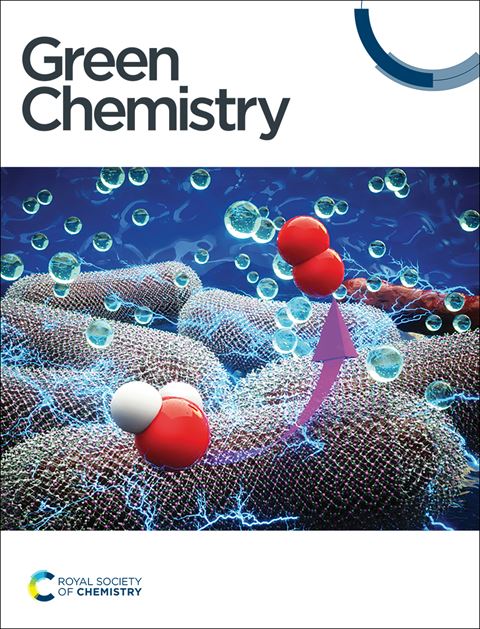Precise reduction of spent Li-ion battery cathodes and a new phase transition mechanism via self-generated H2 to achieve dual recycling of resources and energy†
IF 9.3
1区 化学
Q1 CHEMISTRY, MULTIDISCIPLINARY
引用次数: 0
Abstract
The sluggish leaching kinetics and low separation efficiency of Li/Co/Ni ions, along with high chemical consumption, significantly hinder the recovery efficiency and increase the cost of spent Li-ion batteries. Herein, we proposed a self-generated H2-driven gradient reduction of spent cathodes via surface enrichment of Li+ from retired Li-ion batteries, achieving a facile and efficient extraction of Li (>99.3%) using water as the sole leaching agent, without additional chemicals. Characterizations and calculations revealed the adsorption and electron transfer mechanisms between H2 and LiCoO2, a new phase transition mechanism of the layered structure, and changes in the electronic bonding and coordination environment of elemental Co during precise H2 reduction. Economic and environmental analyses showed that this work exhibited 22.6% of the energy consumption (20.9 kW h kg−1 Li), with 0% CO2 emissions and chemical consumption compared to hydrometallurgy, fully demonstrated its green and energy-saving potential for recycling spent Li-ion batteries.
锂离子电池负极的精确还原和自生氢气的新相变机制,实现资源和能源的双重循环†
Li/Co/Ni离子浸出动力学缓慢,分离效率低,化学物质消耗大,严重影响了回收效率,增加了废锂离子电池的成本。在此,我们提出了一种自生成h2驱动的梯度还原废阴极,通过从退役锂离子电池中表面富集Li+,实现了用水作为唯一浸出剂轻松高效地提取Li (>99.3%),而不需要额外的化学物质。表征和计算揭示了H2与LiCoO2之间的吸附和电子转移机制,层状结构的新相变机制,以及精确还原H2过程中元素Co的电子成键和配位环境的变化。经济和环境分析表明,与湿法冶金相比,该工艺能耗为22.6% (20.9 kW h kg - 1 Li),二氧化碳排放和化学物质消耗为0%,充分显示了其回收废旧锂离子电池的绿色节能潜力。
本文章由计算机程序翻译,如有差异,请以英文原文为准。
求助全文
约1分钟内获得全文
求助全文
来源期刊

Green Chemistry
化学-化学综合
CiteScore
16.10
自引率
7.10%
发文量
677
审稿时长
1.4 months
期刊介绍:
Green Chemistry is a journal that provides a unique forum for the publication of innovative research on the development of alternative green and sustainable technologies. The scope of Green Chemistry is based on the definition proposed by Anastas and Warner (Green Chemistry: Theory and Practice, P T Anastas and J C Warner, Oxford University Press, Oxford, 1998), which defines green chemistry as the utilisation of a set of principles that reduces or eliminates the use or generation of hazardous substances in the design, manufacture and application of chemical products. Green Chemistry aims to reduce the environmental impact of the chemical enterprise by developing a technology base that is inherently non-toxic to living things and the environment. The journal welcomes submissions on all aspects of research relating to this endeavor and publishes original and significant cutting-edge research that is likely to be of wide general appeal. For a work to be published, it must present a significant advance in green chemistry, including a comparison with existing methods and a demonstration of advantages over those methods.
 求助内容:
求助内容: 应助结果提醒方式:
应助结果提醒方式:


